SIX: The Human Body
Campbell Chapters 41,42,43,44,45,46,48,49, and 50
Topic 6: Human Health and Physiology (Core)
6.1 Digestion—Campbell chapter 41.
Assessment Statements
• Explain why digestion of large food molecules is essential. (6.1.1)
• Explain the need for enzymes in digestion. (6.1.2)
• State the source, substrate, products and optimum pH conditions for one amylase, one protease and one lipase. (6.1.3)
• Draw and label a diagram of the digestive system. (6.1.4)
• Outline the function of the stomach, small intestine and large intestine. (6.1.5)
• Distinguish between absorption and assimilation. (6.1.6)
• Explain how the structure of the villus is related to its role in absorption and transport of the products of digestion. (6.1.7)
6.2 The Transport System—Campbell chapter 42.
Assessment Statements
• Draw and label a diagram of the heart showing the four chambers, associated blood vessels, valves and the route of blood through the heart. (6.2.1)
• State that the coronary arteries supply heart muscle with oxygen and nutrients. (6.2.2)
• Explain the action of the heart in terms of collecting blood, pumping blood, and opening and closing of valves. (6.2.3)
• Outline the control of the heartbeat in terms of myogenic muscle contraction, the role of the pacemaker, nerves, the medulla of the brain and epinephrine (adrenaline). (6.2.4)
• Explain the relationship between the structure and function of arteries, capillaries and veins. (6.2.5)
• State that blood is composed of plasma, erythrocytes, leucocytes (phagocytes and lymphocytes) and platelets. (6.2.6)
• State that the following are transported by the blood: nutrients, oxygen, carbon dioxide, hormones, antibodies, urea and heat. (6.2.7)
6.4 Gas Exchange—Campbell chapter 42.
Assessment Statements
• Distinguish between ventilation, gas exchange and cell respiration. (6.4.1)
• Explain the need for a ventilation system. (6.4.2)
• Describe the features of alveoli that adapt them to gas exchange. (6.4.3)
• Draw and label a diagram of the ventilation system, including trachea, lungs, bronchi, bronchioles and alveoli. (6.4.4)
• Explain the mechanism of ventilation of the lungs in terms of volume and pressure changes caused by the internal and external intercostal muscles, the diaphragm and abdominal muscles. (6.4.5)
6.3 Defense Against Infectious Disease—Campbell chapter 43.
Assessment Statements
• Define pathogen. (6.3.1)
• Explain why antibiotics are effective against bacteria but not against viruses. (6.3.2)
• Outline the role of skin and mucous membranes in defence against pathogens. (6.3.3)
• Outline how phagocytic leucocytes ingest pathogens in the blood and in body tissues. (6.3.4)
• Distinguish between antigens and antibodies. (6.3.5)
• Explain antibody production. (6.3.6)
• Outline the effects of HIV on the immune system. (6.3.7)
• Discuss the cause, transmission and social implications of AIDS. (6.3.8)
AHL Topic 11:
11.1 Defense Against Infectious Disease (HL only)—Campbell chapter 43.
Assessment Statements
• Describe the process of blood clotting. (AHL 11.1.1)
• Outline the principle of challenge and response, clonal selection and memory cells as the basis of immunity. (AHL 11.1.2)
• Define active and passive immunity. (AHL 11.1.3)
• Explain antibody production. (AHL 11.1.4)
• Describe the production of monoclonal antibodies and their use in diagnosis and in treatment. (AHL 11.1.5)
• Explain the principle of vaccination. (AHL 11.1.6)
• Discuss the benefits and dangers of vaccination. (AHL 11.1.7)
AHL Topic 11:
11.3 The Kidney (HL only)—Campbell chapter 44.
Assessment Statements
• Define excretion. (11.3.1)
• Draw and label a diagram of the kidney. (11.3.2)
• Annotate a diagram of a glomerulus and associated nephron to show the function of each part. (11.3.3)
• Explain the process of ultrafiltration, including blood pressure, fenestrated blood capillaries and basement membrane. (11.3.4)
• Define osmoregulation. (11.3.5)
• Explain the reabsorption of glucose, water and salts in the proximal convoluted tubule, including the roles of microvilli, osmosis and active transport. (11.3.6)
• Explain the roles of the loop of Henle, medulla, collecting duct and ADH (vasopressin) in maintaining the water balance of the blood. (11.3.7)
• Explain the differences in the concentration of proteins, glucose and urea between blood plasma, glomerular filtrate and urine. (11.3.8)
• Explain the presence of glucose in the urine of untreated diabetic patients. (11.3.9)
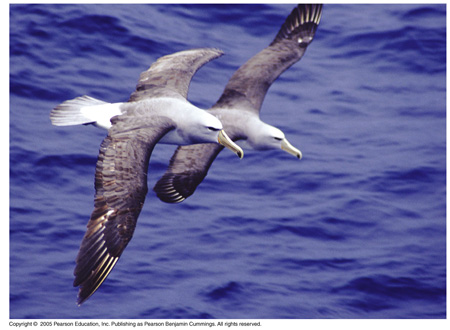
Chapter 44 Presentation-Osmoregulation and Excretion
6.5 Nerves, Hormones, and Homeostasis—Campbell chapter 45, 48, and 49.
Assessment Statements
• State that the nervous system consists of the central nervous system (CNS) and peripheral nerves, and is composed of cells called neurons that can carry rapid electrical impulses. (6.5.1)
• Draw and label a diagram of the structure of a motor neuron. (6.5.2)
• State that nerve impulses are conducted from receptors to the CNS by sensory neurons, within the CNS by relay neurons, and from the CNS to effectors by motor neurons. (6.5.3)
• Define resting potential and action potential (depolarization and repolarization). (6.5.4)
• Explain how a nerve impulse passes along a non-myelinated neuron. (6.5.5)
• Explain the principles of synaptic transmission. (6.5.6)
• State that the endocrine system consists of glands that release hormones that are transported in the blood. (6.5.7)
• State that homeostasis involves maintaining the internal environment between limits, including blood pH, carbon dioxide concentration, blood glucose concentration, body temperature and water balance. (6.5.8)
• Explain that homeostasis involves monitoring levels of variables and correcting changes in levels by negative feedback mechanisms. (6.5.9)
• Explain the control of body temperature, including the transfer of heat in blood, and the roles of the hypothalamus, sweat glands, skin arterioles and shivering. (6.5.10)
• Explain the control of blood glucose concentration, including the roles of glucagon, insulin and α and β cells in the pancreatic islets. (6.5.11)
• Distinguish between type I and type II diabetes. (6.5.12)
6.6 Reproduction—Campbell chapter 46.
Assessment Statements
• Draw and label diagrams of the adult male and female reproductive systems. (6.6.1)
• Outline the role of hormones in the menstrual cycle, including FSH (follicle stimulating hormone), LH (luteinizing hormone), estrogen and progesterone. (6.6.2)
• Annotate a graph showing hormone levels in the menstrual cycle, illustrating the relationship between changes in hormone levels and ovulation, menstruation and thickening of the endometrium. (6.6.3)
• List three roles of testosterone in males. (6.6.4)
• Outline the process of in vitro fertilization (IVF). (6.6.5)
• Discuss the ethical issues associated with IVF. (6.6.6)
AHL Topic 11:
11.4 Reproduction (HL only)—Campbell chapter 46.
Assessment Statements
• Annotate a light micrograph of testis tissue to show the location and function of interstitial cells (Leydig cells), germinal epithelium cells, developing spermatozoa and Sertoli cells. (AHL 11.4.1)
• Outline the processes involved in spermatogenesis within the testis, including mitosis, cell growth, the two divisions of meiosis and cell differentiation. (AHL 11.4.2)
• State the role of LH, testosterone and FSH in spermatogenesis. (AHL 11.4.3)
• Annotate a diagram of the ovary to show the location and function of germinal epithelium, primary follicles, mature follicle and secondary oocyte. (AHL 11.4.4)
• Outline the processes involved in oogenesis within the ovary, including mitosis, cell growth, the two divisions of meiosis, the unequal division of cytoplasm and the degeneration of polar body. (AHL 11.4.5)
• Draw and label a diagram of a mature sperm and egg. (AHL 11.4.6)
• Outline the role of the epididymis, seminal vesicle and prostate gland in the production of semen. (AHL 11.4.7)
• Compare the processes of spermatogenesis and oogenesis, including the number of gametes and the timing of the formation and release of gametes. (AHL 11.4.8)
• Describe the process of fertilization, including the acrosome reaction, penetration of the egg membrane by a sperm and the cortical reaction. (AHL 11.4.9)
• Outline the role of HCG in early pregnancy. (AHL 11.4.10)
• Outline early embryo development up to the implantation of the blastocyst. (AHL 11.4.11)
• Explain how the structure and functions of the placenta, including its hormonal role in secretion of estrogen and progesterone, maintain pregnancy. (AHL 11.4.12)
• State that the fetus is supported and protected by the amniotic sac and amniotic fluid. (AHL 11.4.13)
• State that materials are exchanged between the maternal and fetal blood in the placenta. (AHL 11.4.14)
• Outline the process of birth and its hormonal control, including the changes in progesterone and oxytocin levels and positive feedback. (AHL 11.4.15)
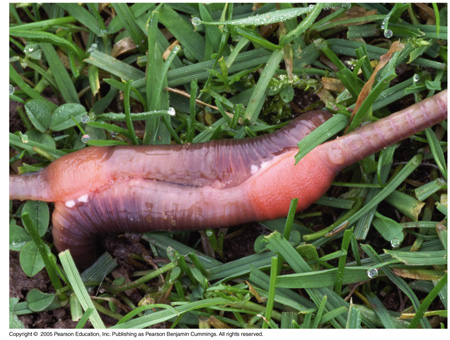
Chapter 46 Presentation-Animal Reproduction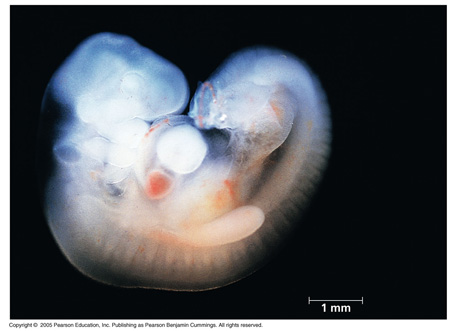
Chapter 47 Presentation-Fertilization Only
6.5 Nerves, Hormones, and Homeostasis—Campbell chapter 45, 48, and 49.
Assessment Statements
• State that the nervous system consists of the central nervous system (CNS) and peripheral nerves, and is composed of cells called neurons that can carry rapid electrical impulses. (6.5.1)
• Draw and label a diagram of the structure of a motor neuron. (6.5.2)
• State that nerve impulses are conducted from receptors to the CNS by sensory neurons, within the CNS by relay neurons, and from the CNS to effectors by motor neurons. (6.5.3)
• Define resting potential and action potential (depolarization and repolarization). (6.5.4)
• Explain how a nerve impulse passes along a non-myelinated neuron. (6.5.5)
• Explain the principles of synaptic transmission. (6.5.6)
• State that the endocrine system consists of glands that release hormones that are transported in the blood. (6.5.7)
• State that homeostasis involves maintaining the internal environment between limits, including blood pH, carbon dioxide concentration, blood glucose concentration, body temperature and water balance. (6.5.8)
• Explain that homeostasis involves monitoring levels of variables and correcting changes in levels by negative feedback mechanisms. (6.5.9)
• Explain the control of body temperature, including the transfer of heat in blood, and the roles of the hypothalamus, sweat glands, skin arterioles and shivering. (6.5.10)
• Explain the control of blood glucose concentration, including the roles of glucagon, insulin and α and β cells in the pancreatic islets. (6.5.11)
• Distinguish between type I and type II diabetes. (6.5.12)
AHL Topic 11:
11.2 Muscles and Movement (HL only)—Campbell chapter 50.
Assessment Statements
• State the roles of bones, ligaments, muscles, tendons and nerves in human movement. (AHL 11.2.1)
• Label a diagram of the human elbow joint, including cartilage, synovial fluid, joint capsule, named bones and antagonistic muscles (biceps and triceps). (AHL 11.2.2)
• Outline the functions of the structures in the human elbow joint named in 11.2.2. (AHL 11.2.3)
• Compare the movements of the hip joint and the knee joint. (AHL 11.2.4)
• Describe the structure of striated muscle fibres, including the myofibrils with light and dark bands, mitochondria, the sarcoplasmic reticulum, nuclei and the sarcolemma. (AHL 11.2.5)
• Draw and label a diagram to show the structure of a sarcomere, including Z lines, actin filaments, myosin filaments with heads, and the resultant light and dark bands. (AHL 11.2.6)
• Explain how skeletal muscle contracts, including the release of calcium ions from the sarcoplasmic reticulum, the formation of cross-bridges, the sliding of actin and myosin filaments, and the use of ATP to break cross-bridges and re-set myosin heads. (AHL 11.2.7)
• Analyse electron micrographs to find the state of contraction of muscle fibres. (AHL 11.2.8)
6.5 Nerves, Hormones, and Homeostasis—Campbell chapter 45, 48, and 49.
Assessment Statements
• State that the nervous system consists of the central nervous system (CNS) and peripheral nerves, and is composed of cells called neurons that can carry rapid electrical impulses. (6.5.1)
• Draw and label a diagram of the structure of a motor neuron. (6.5.2)
• State that nerve impulses are conducted from receptors to the CNS by sensory neurons, within the CNS by relay neurons, and from the CNS to effectors by motor neurons. (6.5.3)
• Define resting potential and action potential (depolarization and repolarization). (6.5.4)
• Explain how a nerve impulse passes along a non-myelinated neuron. (6.5.5)
• Explain the principles of synaptic transmission. (6.5.6)
• State that the endocrine system consists of glands that release hormones that are transported in the blood. (6.5.7)
• State that homeostasis involves maintaining the internal environment between limits, including blood pH, carbon dioxide concentration, blood glucose concentration, body temperature and water balance. (6.5.8)
• Explain that homeostasis involves monitoring levels of variables and correcting changes in levels by negative feedback mechanisms. (6.5.9)
• Explain the control of body temperature, including the transfer of heat in blood, and the roles of the hypothalamus, sweat glands, skin arterioles and shivering. (6.5.10)
• Explain the control of blood glucose concentration, including the roles of glucagon, insulin and α and β cells in the pancreatic islets. (6.5.11)
• Distinguish between type I and type II diabetes. (6.5.12)
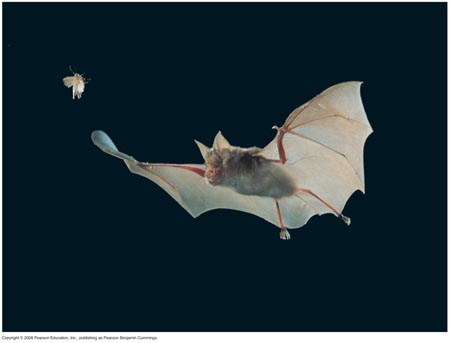
Chapter 49 and 50 Presentations-Sensory and Motor Mechanisms Part I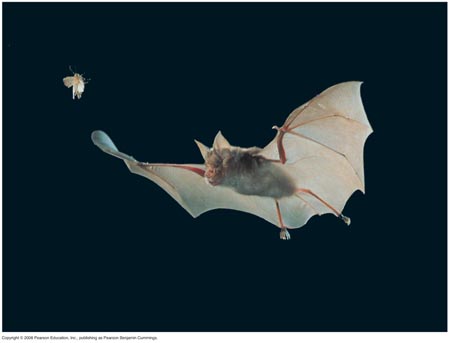
Chapter 49 and 50 Presentations-Sensory and Motor Mechanisms Part II

